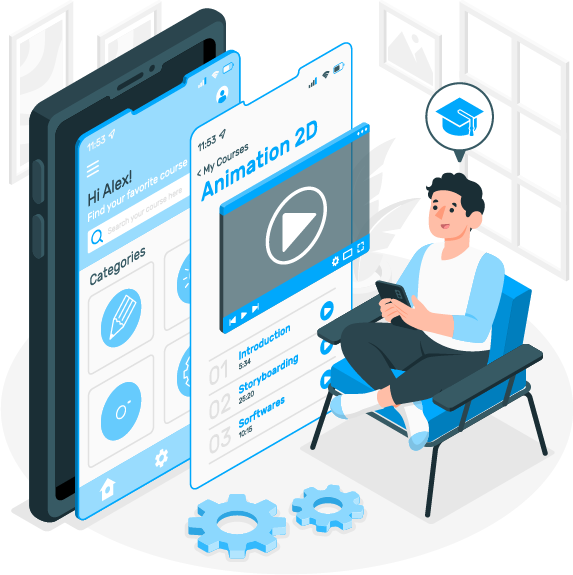Mobile learning – Why and how
More and more people are using mobile devices such as tablets and smart phones and prefer access to easy and just-in-time (JIT) learning. Hence it makes logical sense for learning organizations to provide learning on mobile devices (mobile learning).
How would you define mobile learning (m-learning) though? Mobile learning is actually any kind of learning intervention which could be carried out via a mobile device and using wireless technology.
To support e-learning through mobile devices it is very important to have the right adaptable learning content available on the learners mobile device. There are several factors which make it a compelling case for delivering learning content and applications on mobile devices.

A recent 2011 eLearning Guild survey reports that about 70% of respondents are using their personal mobile devices for business applications. That means they are using their devices for browsing the web, connecting to social networks, playing games and learning. Also there has been a significant increase in the number of employees who travel and work from outside their base offices and just-in-time information can help them overcome many learning challenges. Mobile learning provides convenience and flexibility to access information at any time and any place. It helps employees make use of their downtime, be it at a hotel, airport or while waiting for a client meeting to start. But mobile learning doesn’t just help corporate employees, it is a great avenue for anyone who needs to access any kind of information at any place and time. Examples of other training groups can include partner organization elearning, and customer elearning.
The goal of mobile Learning should be to enhance the quality of the learning for your learners while delivering the content. If delivered in the right manner it can be an excellent tool for anything and everything a learner would need. Such as streaming online content, on-the-job training materials or real-life simulation scenarios.
Companies can also push out updates, offer reference materials via wikis and blogs, and provide collaboration through social networking, coaching or mentoring.
Mobile learning is not just repackaging of existing e-learning content and making it available through mobile devices. There are various challenges associated with the application of content delivery when it comes to mobile devices. The biggest challenge is the diversity of formats and lack of formal standardization. These issues can slow the adoption of apps or content on these devices. There are also issues around content bandwidth, its security and integration with corporate systems such as LMS, LCMS and other systems. This leads to the creation of barriers in rapid deployment and adoption by organizations.
There are various organizations including learning content providers, application software providers, and LMS systems providers who are doing great work in their ability to enable and support mobile learning. These organizations are using some straightforward and simple but effective approaches which are helping them to be somewhat successful in overcoming many of the modern hurdles we see today.
One of the approaches successful organizations are taking is to target their learning environment and/or content to specific mobile devices and not trying to support every possible device available. They select specific devices based on accessibility for their audience, popularity, and adaptability to help them focus their support on key devices. It is also important to focus on high performing just-in-time content and not design and create long full-fledged courses. Lastly Keeping the application designs for mobile tools simple and intuitive to enable mobile adoption. Users always like to use the experience which is:
-Simple and straightforward
-Has their required functionality
-Eliminates any type of complexity.
This type of interface on mobile tools provides easy and efficient access to the learning.
Some organizations while focusing on specific devices try to take advantage of inherent features of the device itself to provide easy accessibility and interactivity. For example: Apple products such as the iPad and iPhone have a lot of inbuilt features to make content interactive. Some organizations are also trying to provide collaborative learning by integrating the learning environment with social networking applications. These are all great techniques and strategies which are helping organizations to integrate elearning with the social and informal learning culture. In turn this keeps elearning interactive and fun.
Of course the elearning industry has a long way to go, but there are some great and promising technological enhancements happening in the area of mobile learning which is for sure going to change the shape of how users learn in the future.
